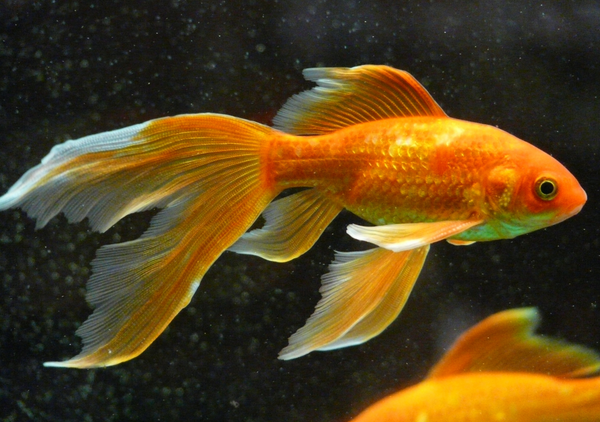 Ceratophrys (the Pacman frog) is a genus of frog from the family Ceratophryidae, known for their relatively easy care. These funny fat frogs are found in the marshy jungles of South America, spanning from Ecuador to Argentina and Brazil. Pacman frogs have found their way from the jungle into a commonly captive bred frog in the pet trade today. So what makes these guys such a loved household amphibian?
Ceratophrys (the Pacman frog) is a genus of frog from the family Ceratophryidae, known for their relatively easy care. These funny fat frogs are found in the marshy jungles of South America, spanning from Ecuador to Argentina and Brazil. Pacman frogs have found their way from the jungle into a commonly captive bred frog in the pet trade today. So what makes these guys such a loved household amphibian?
About the Pacman Frog
It is not hard to imagine why this frog has been dubbed "Pacman frog". Their large round bodies come equipped with a humorously large stomach and mouth, that can envelope almost any food that crosses its path! Pacman have been known to live for up to 10-15 years in captivity. Depending on the species and sex of your pacman frog, you can expect an adult size to be between 4"-7" in length. An adult male pacman will be more vocal, larger and develop brown nuptial pads on the outside of their thumbs. There are various color morphs, including albino, apricot & strawberry.
Housing
 Now, unlike the retro video game Pac-Man, these frogs are very inactive and do not move around much. A 10-20 gallon low glass terrarium with screen top is adequate. These guys are not much for climbing, so tank height is not a priority. Pacman frogs LOVE to burrow, and will spend days, weeks and sometimes months engulfed in soil. Pisces recommends Exo Terra 3-Pack Plantation Soil mixed with sphagnum moss to help with humidity, enough for the frog to borrow under. Provide a dish large enough for your frog to soak in, but only half full (below face height) as pacman frogs are poor swimmers and can drown. Do not house more than a single pacman in one tank, they are very aggressive and eat anything in their path, including other pacman frogs!
Now, unlike the retro video game Pac-Man, these frogs are very inactive and do not move around much. A 10-20 gallon low glass terrarium with screen top is adequate. These guys are not much for climbing, so tank height is not a priority. Pacman frogs LOVE to burrow, and will spend days, weeks and sometimes months engulfed in soil. Pisces recommends Exo Terra 3-Pack Plantation Soil mixed with sphagnum moss to help with humidity, enough for the frog to borrow under. Provide a dish large enough for your frog to soak in, but only half full (below face height) as pacman frogs are poor swimmers and can drown. Do not house more than a single pacman in one tank, they are very aggressive and eat anything in their path, including other pacman frogs!
Heat, Lighting & Humidity
Maintain a temperature as low as 18 C (65 F) at night to as high as 29 C (85 F) during the day. use an appropriate heat bulb on one side of the tank so your frog can escape the heat if desired. Live plants do very well in a pacman enclosure, due to the deep soil and high humidity. For thriving live plants, Pisces recommends: Exo Terra Natural Light Daylight Bulb in addition to the heat source. Do not use a heat pad!! Pacman frogs like to bury deep down and can easily get burned by a heat pad. Amphibians absorb water through their skin, always use RO water or conditioner to ensure no chlorine is present. Keep high humidity of 60%-80%, this can be accomplished with daily misting, damp moss and moist substrate.
Feeding
 Pacman are carnivores with a fierce appetite and will eat almost anything that comes within a small radius of their mouths. This includes crickets, roaches, various worms, grasshoppers, fish & pacman frog food bites. Feed your pacman frog daily, as many as it will consume in one meal, and remove any excess insects from tank. Adult frogs can even be offered appropriate sized mice once every 2 weeks. Pisces recommends: Exo Terra Electrolyte Supplement to help support a healthy appetite and activity.
Pacman are carnivores with a fierce appetite and will eat almost anything that comes within a small radius of their mouths. This includes crickets, roaches, various worms, grasshoppers, fish & pacman frog food bites. Feed your pacman frog daily, as many as it will consume in one meal, and remove any excess insects from tank. Adult frogs can even be offered appropriate sized mice once every 2 weeks. Pisces recommends: Exo Terra Electrolyte Supplement to help support a healthy appetite and activity.
Behavior
Pacman frogs should not be handled unless absolutely necessary. Handling is bad for the frogs sensitive skin, they may try chomp one of your fingers! These guys have a strong bite and hold on hard, so keep your distance! When food is scarce, or the humidity is too low, pacmans can enter a state known as "brumation". During brumation, their skin will harden into a tough shell, bury underground and will not move for extended periods of time. They can be often mistaken for dead, but they are not! If this happens to you, keep the tank as moist and humid as possible and play the waiting game. Eventually your frog will break of out its hard skin and eat it!
Any more questions about pacman frogs? Feel free to call us, visit us in-store or shoot us a message online!




